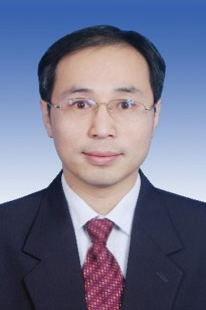Hydrogen content on the tensile behavior and DHC mechanism of zircaloy-4 under strain
Baifeng Luan1*, Huanzheng Sun1, Qing Liu1,2
1 Chongqing University, Chongqing, 400044, China
2 Nanjing Tech University, Nanjing, 211816, China
EXTENDED ABSTRACT: Based on the oriented development of higher-burnup of reactor, cladding materials facing unprecedented challenge no matter normal operating condition or transient accident conditions, whereas the margin lifetime assessment of cladding materials is vital for the safety operation of the reactor. Scanning Electron Microscopy, Electron Backscattered Diffraction, Transmission Electron Microscopy are jointly employed to examined the microstructure evolution of specimen, aim to clarified the tensile behavior and DHC (Delayed Hydrogen Cracking) mechanisms under strain of zirconium alloy within a wider hydrogen content.
By increasing the hydrogen content, stress concentration intensity at the local area of hydride tip increase for the hydride size increase. Stress-strain curves show the yield phenomenon is suppressed when hydrogen content less than 750 ppm, which attributed to the raised dislocation density for 17.2% volume expansion induced by hydrides precipitated. While it reappears abnormally when the hydrogen content reaches 920 ppm, it is mainly due to the drag effect of dislocations related to the transformation of δ-ZrH1.5 to γ-ZrH, and the hindering effect of the severe lattice distortion is also contributed. Meanwhile, KIH (threshold stress intensity factor) decrease with the aspect ratio of hydrides increase, which induced the accelerate of DHC velocity. And thus, the number and size of cracks decreased significantly of specimen with higher hydrogen content. The hydride inter-connect degree and proportion of radial hydrides higher, the lesser ductility of zircaloy-4 is retained.
Based on the hydride phase transformation and microstructure evolution at local area of hydrides and cracks, the research aims to provide a novel insight to explore the relationship of tensile behavior and DHC mechanisms of zircaloy-4 within a wider hydrogen content. Moreover, Its provided valuable theoretical and experimental basis for the margin assessment of service lifetime of cladding materials under LOCA (Loss of Coolant Accident).

Professor Luan Baifeng, completed his PhD from Harbin Institute of Technology and postdoctoral studies from Tsinghua University, is now a professor and doctoral supervisor of Chongqing University. Main research area is Advanced Metal Structural Materials for Nuclear Reactors, and has published more than 100 papers, such as《Acta Materials》, 《Scripta Materials》, 《Journal of Nuclear Materials》. Currently, he holds the posts of deputy director of Chongqing Key Laboratory of Light Metal Science and Technology, member of Academic Committee of School of Materials Science and Engineering in Chongqing University.